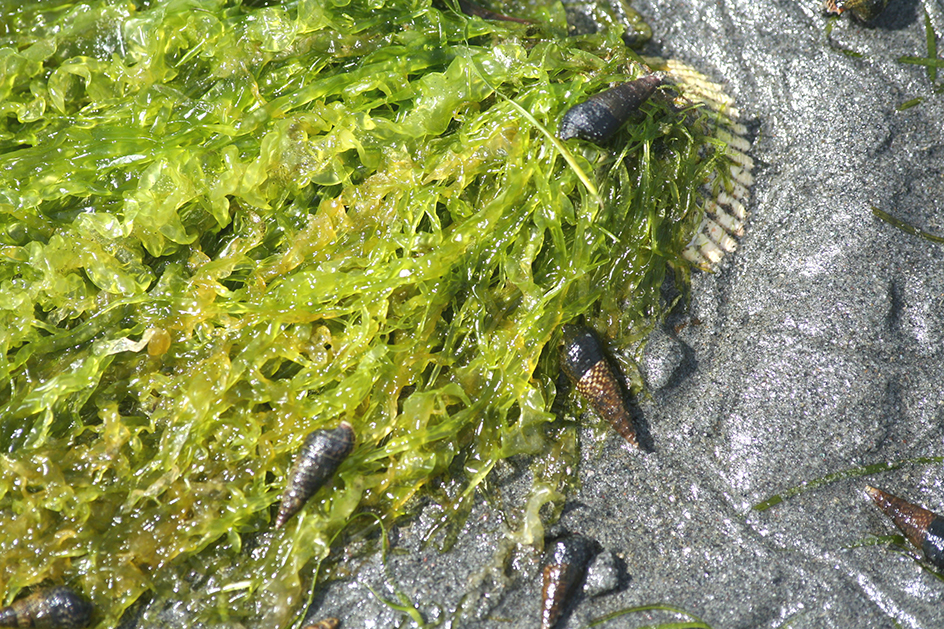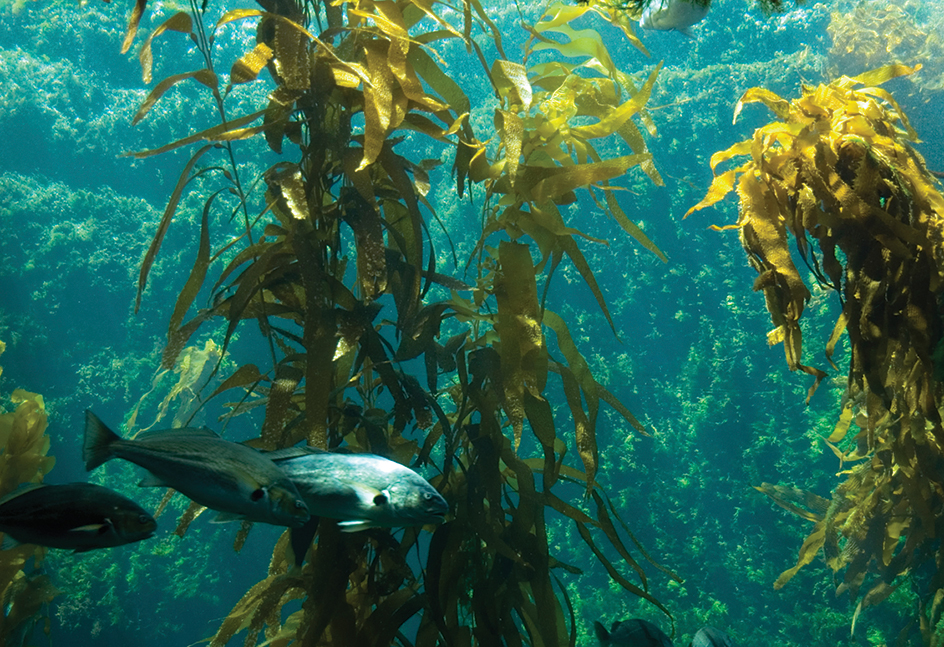Kelp is any of a variety of large, brown to brownish-green seaweeds that grow underwater and on rocky shores. Kelps inhabit cold waters in many parts of the world. They usually do not grow in tropical waters.

Kelps vary widely in size and form. One type, called giant kelp, may have hundreds of branches, each of which has hundreds of leaves. Giant kelp may measure up to 200 feet (60 meters) long. In areas where many giant kelps live together, they form underwater forests. Some species consist of a single branch and grow less than 3 feet (1 meter) long. Kelps have a complex type of life cycle known as alternation of generations. They spend part of this life cycle as microscopic organisms. See Alternation of generations .

Many marine animals, such as snails and sea urchins, feed on kelps. Other animals, including lobsters and many fish, use kelps for shelter. People in China and Japan grow kelp for food on special farms in the ocean. In the United States and many other countries, kelps are collected from the places where they grow naturally. For example, giant kelp is harvested along the coast of California. Harvested kelps yield algin, a substance used in the manufacture of ice cream, salad dressing, beer, paper, cosmetics, and many other products. Kelps are also used as animal feed and as fertilizer.
See also Iodine ; Ocean (Life in the ocean) ; Seaweed .
